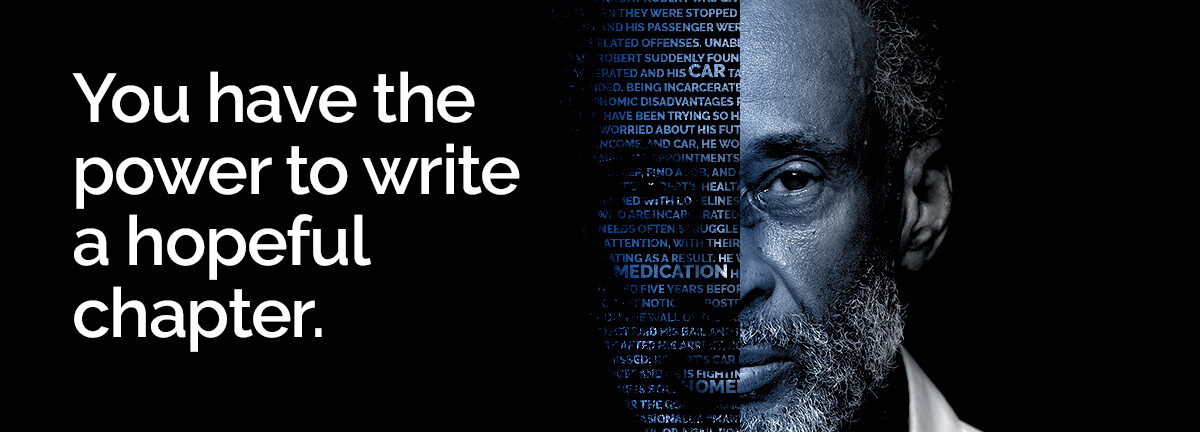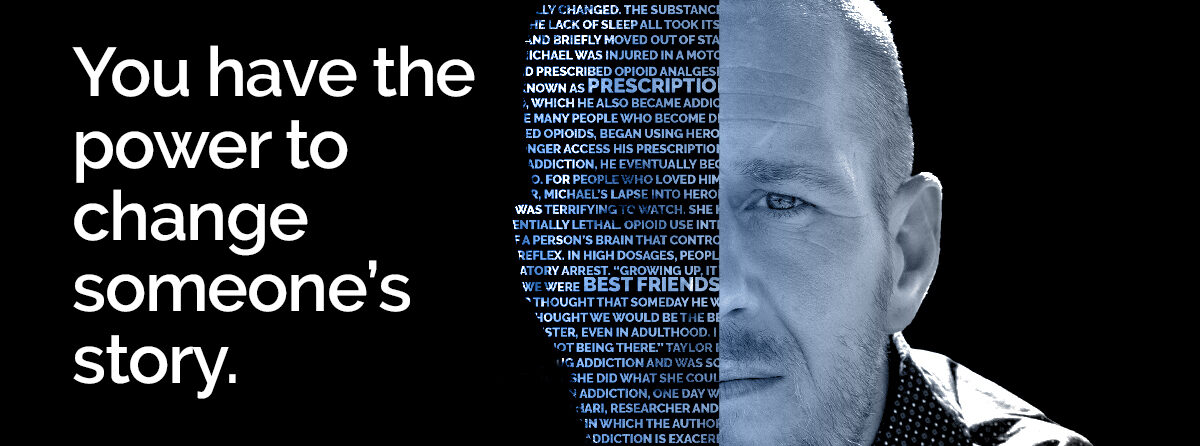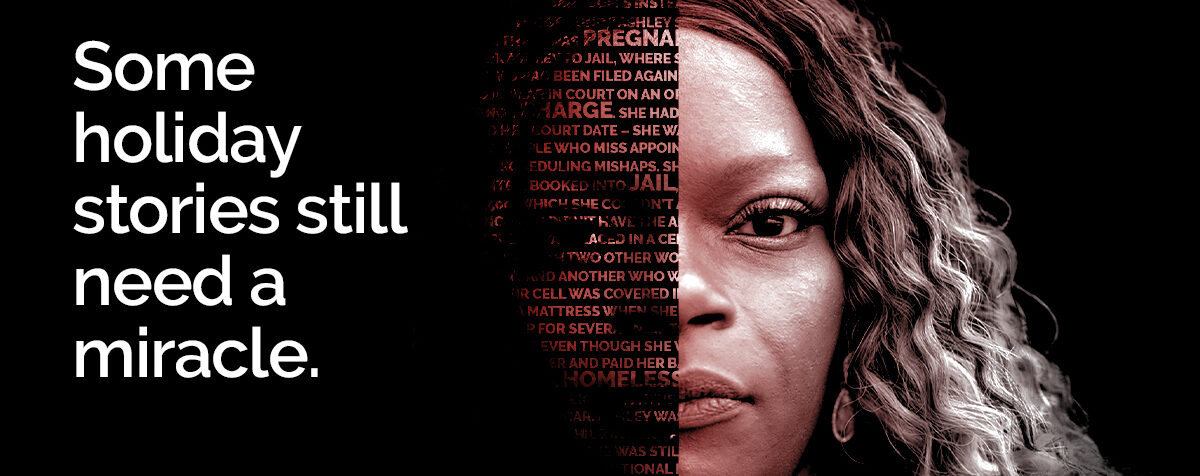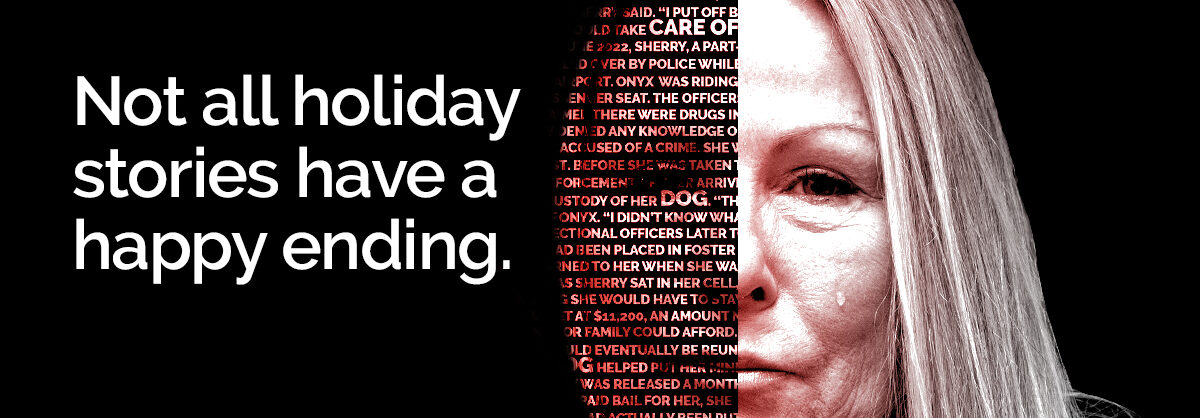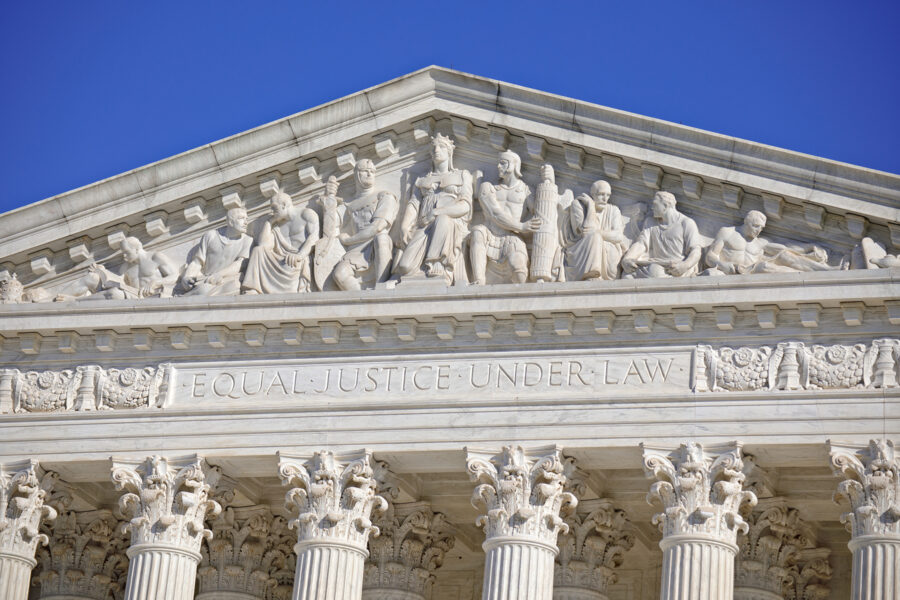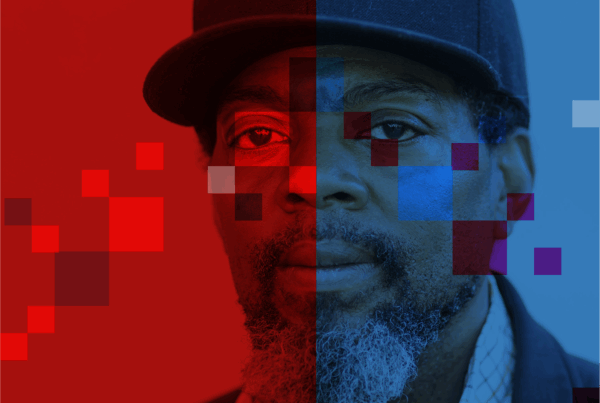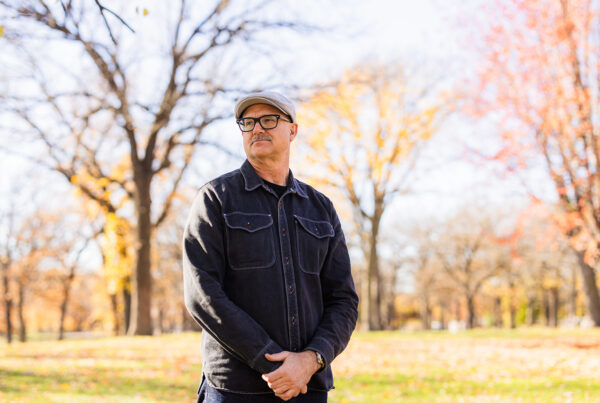Introduction
For as long as there have been jail cells and bondage in America, families and communities have pooled their resources together to try to purchase the freedom of their loved ones. From slavery to mass incarceration, American systems have conspired to control and incarcerate men and women from marginalized communities, particularly communities of color. Today, eleven million men and women, almost all from low-income communities and disproportionately from communities of color, are shoveled into jails across America for ever-increasing minor offenses—conduct that goes on in every community but is only policed in their communities.1Vera Institute of Justice, Incarceration’s Front Door: The Misuse of Jails in America (February 2015), https://storage.googleapis.com/vera-web-assets/downloads/Publications/incarcerations-front-door-the-misuse-of-jails-in-america/legacy_downloads/incarcerations-front-door-report_02.pdf.
Every night, almost half a million people—who have not been convicted of anything—go to sleep in jail cells because they cannot afford to pay cash bail.2Color of Change & American Civil Liberties Union, $elling Off Our Freedom: How Insurance Corporations Have Taken Over Our Bail System (May 2017), https://www.aclu.org/sites/default/files/field_document/059_bail_report_2_1.pdf. It is one key driver of mass incarceration, responsible for 99 percent of jail growth in America over the past fifteen years. It is, for those who cannot afford to pay it, the most destructive force in the criminal legal system—ruining lives, destabilizing families, and weakening communities. Moreover, it creates enormous pressure on the person locked in a jail cell to plead guilty to a crime—whether or not she is guilty—so she can return to the safety of her home. Whether a person is in jail, on bail, or at liberty, will determine just about everything that comes after the jail door does, or does not, close. It will influence case outcomes, life outcomes, and the long-term consequences of an arrest.3Leila Morsy & Richard Rothstein, Mass Incarceration and Children’s Outcomes (December 2016), https://www.epi.org/files/pdf/118615.pdf. So, the ability to get someone out of jail while his or her case winds its way through an overburdened criminal legal system is critical.
For low-income families, struggling to feed their families, pay rent, and make ends meet, even a low-end bail is an insurmountable challenge. In this precarious situation, poor people under arrest often fall prey to the whispers of prosecutors who promise them an enticing deal—plead guilty now and you can return home. But this comes at an enormous cost—a permanent criminal record that will have negative rippling effects on all aspects of an individual’s’ life, including his or her employment, housing, voting rights, immigration status, child custody, physical and mental health.4Id.
Throughout American history, the criminal legal system has targeted marginalized communities. It has targeted dissidents, activists and members of political groups that challenge the status quo. The response has been to pool personal, family, or community resources wherever possible. One mechanism, and the subject of this paper, has been the creation of organized “bail funds”5Sarah Phillips, National Survey of Community Bail Funds: Report to the Community (April 2017). to pay bail for those who cannot afford it.
Bail funds have long presented a pathway to freedom—a disruptive fissure in a system that criminalizes both poverty and race. In many ways, the story of bail funds provides a window into many critical moments in American history over the last century. Bail funds have sprouted up during times of intense conflict between the United States government and political activists, suspected Communists, civil rights leaders, and students. Visually, the history of bail funds would look much like the ebb and flow of an ocean’s tide, growing with consciousness about injustice and falling into extinction once the momentum, or often the money, dies out. The creation of bail funds in the United States is a tribute to the power of individuals to create a collective force to push back against the complex and growing force of mass incarceration.
Bail funds build on the tradition of churches, families, and other community members who, as black communities did during slavery, join together to purchase the freedom of their loved ones. As mass incarceration has entrapped more and more of the country, communities have responded in recent years with an increasing commitment to the direct action of bailing strangers out of jail. While marginalized communities have long been pooling resources to pay bail, organized bail funds—often aimed at bailing out strangers—were few and far between for much of the twentieth and start of the twenty-first century. But as mass incarceration has spread across the country, more Americans have come to understand the injustice that has long been apparent to low-income communities and communities of color, and there has been a subsequent influx of resources into decarceration efforts.
As Jocelyn Simonson writes in her article, Bail Nullification, “community groups and churches have long had a practice of passing a hat to collect funds to help people with bail and legal defense, but formal charitable bail funds—formed expressly for the purpose of posting bail—have taken off nationally only in the last five years.”6Jocelyn Simonson, Bail Nullification, 115 Mich. L. Rev 585, 600 (2017). Today, they operate in over twenty cities across America and collectively bail out thousands of people annually. More funds are sprouting up every year. There are, without a doubt, more collective resources in bail funds today than at any point in American history.
While bail funds have taken off recently, the history of organized bail funds in the United States, recorded as far back as the 1920s, is long and dynamic. From the American Civil Liberties Union’s establishment of a national bail fund in 1920, at a time when anti-Communist sentiments ran high and political dissidents were incarcerated, to the community bail funds popping up across the country today, the bail fund has historically served as a staple in people’s fight for freedom. This Article traces the chronology of several bail funds in the United States drawing from archival documents, court cases, letters, newspaper articles, and first-person interviews. It will focus on bail funds in the criminal court context rather than immigration bonds, and it is by no means a comprehensive review of all bail funds or bail-out efforts, many which remain unknown to those beyond the communities they serve. It is instead an attempt to highlight a few efforts from different time periods and trace the themes and lessons learned from the dynamic history of organized bail funds. It is our hope that by reviving some of this history, we can take the lessons of the past to inform how we deploy this rapidly expanding tool in the struggles of today.
Radical Roots
The ACLU National Bail Fund
The first example of a large-scale organized bail fund recorded in United States history was created in 1920 by the American Civil Liberties Union (ACLU) during the aftermath of World War I and the rise of the Soviet Union. America was seething with anti-Communist sentiment and fear of a Communist revolution happening on U.S. soil loomed large. This period, often classified as the First Red Scare, was defined by the U.S. Department of Justice’s harsh policies against anyone suspected of initiating seditious actions. From November 1919 to January 1920, thousands of labor organizers, left-wing radicals, antiwar activists, anarchists, and suspected Communists were captured, arrested, and even deported during the raids led by Attorney General A. Mitchell Palmer.7Laura Weinrib, The Taming of Free Speech: America’s Civil Liberties Compromise 117 (2016).
During this climate of hysteria and mass arrests, the ACLU was created to defend individuals’ rights to free speech. Only eight months after the ACLU’s founding on January 19, 1920, the nascent organization, headed by Roger Baldwin, announced in The New York Times its plans to create a “radical bail fund” of $300,000 with the goal of “free[ing] radicals, prosecuted under the sedition laws . . . .”8Plans a Radical Bail Fund.: Civil Liberties [sic] Union Proposes to Raise $300,000., N.Y. Times, Aug. 16, 1920, at 4. The ACLU National Bail Fund was significant both in its direct opposition to the actions of the U.S. government at the time and in becoming the first national bail fund. It is also likely the first recorded example of a large-scale organized bail fund in U.S. history.
The National Bail Fund was formed with two distinct features. First, it required that “no publicity will attach to the name of the person supplying bail,”9Id. meaning that the funders would remain anonymous. Second, the fund was to be administered by a committee of trustees, who would facilitate the physical bailouts. The fund’s trustees included three well-known men at the time: lawyers Albert De Silver and L. Hollingsworth Wood, as well as the associate editor of The Nation and future leader of the U.S. Socialist Party, Norman M. Thomas.10Id. All remained the fund’s administrators throughout its evolution over the next three years. The initial plans also detailed that any forfeitures of bail would be shared collectively by the fund’s subscribers.11Id.
In September of 1921, the ACLU published another pamphlet that described its action list in the fight to protect unionists and left-wing organizers. The National Bail Fund was again at the forefront of these efforts, although this time the fund’s desired total had been reduced to $200,000.12American Civil Liberties Union, The Fight for Free Speech 12 (1921). There is no indication as to why the fund was reduced by one-third. However, by 1922, the ACLU had already raised $60,000 of their $100,000 projected goal when the announcement was made in The New York Times.13Free Speech Bail Fund.: $60,000 of $100,000 for Civil Rights Cases Already Raised., N.Y. Times, Feb. 23, 1922, at 9. In addition, the fund’s purposes were redirected “to write bail in cases involving free speech or other civil rights”14Id.—in line with the ACLU’s mission. One of the main financial backers of the ACLU’s national fund was Charles Garland, a wealthy philanthropist who used his inheritance to create The Garland Fund—a $2.2 million fund disbursed to different left-wing and politically radical institutions.15Gloria Garrett Samson, The American Fund for Public Service: Charles Garland and Radical Philanthropy, 1922–1941 219 (1996).
The fund was put to use in 1929, when Communist activists, led by strike veteran Fred E. Beal, organized workers to form the National Textile Workers Union in Gastonia, North Carolina.16Weinrib, supra note 8, at 192. A few months later, police raided the union’s headquarters which ended with a police officer dying in an exchange of gunfire. Five union members were arrested and charged with murder.17Id. In a collective effort, the ACLU, the Garland Fund, and the International Labor Defense—a Communist legal organization—bailed out five of the organizers whose bails totaled nearly $40,000.18Id.
While free on bail, Beal, the union’s leader, fled to Russia. Beal’s bail jump not only cost the ACLU $28,500,19Samuel Walker, In Defense of American Liberties: A History of the ACLU but it also compromised the financial stability of the National Bail Fund, as bail is only returned when the accused makes court dates. After Beal left the country, the ACLU announced it would no longer pay bail in Communist cases unless Communist organizers outwardly rejected bail jumping within their organizations.20Id. By 1941, the Garland Fund was dissolved, as the U.S. was embroiled in World War II. By then the fund was only a fraction of its previous size.
Though short lived, the very existence of the ACLU’s National Bail Fund served a critical purpose in civil liberties legislation and is a prime example of an organized disruption of America’s wealth-based legal system.
Civil Rights Congress Bail Fund
The next time a large-scale political bailout made national headlines came in the 1950s during the Second Red Scare. This era was marked by fearmongering Senator Joseph McCarthy who alleged that Communists and Soviet spies had infiltrated the U.S. government, promptly initiating a mass witch hunt. With national fear reignited, many left-wing radicals and political dissidents again fell under scrutiny of the country’s fiercest Communist hunters; many more were arrested through federal laws against subversion.21Victor Rabinowitz, Unrepentant Leftist: A Lawyer’s Memoir 115 (1996).
One of the most prominent pieces of legislation to emerge during World War II was the Alien Registration Act, known colloquially as the Smith Act of 1940, as fears of Nazi Germany and pro–Nazi alignments were on the rise. The law criminalized anyone who “knowingly or willfully advocate[s], abet[s], [or] advise[s] . . . overthrowing or destroying any government in the United States”.22Alien Registration Act of 1940, Pub. L. No. 76–670, 54 Stat. 670, 671 (1940). and became a major weapon during the 1950s to target alleged Communists. Under this law, hundreds of Communist organizers, sympathizers, and suspected subversives were arrested and convicted. The most noteworthy instance was in October 1949 when eleven men, including members of the U.S. Communist Party and leftist publications, were arrested and charged under the Smith Act for “secretly advocating the overthrow of the government by violence.”23William Sharp, Communist Trial Ends With 11 Guilty, Life Magazine, Oct. 24, 1949, at 31. These charges would eventually become codified in a case known as Dennis v. United States, which ruled it a criminal offense to call for or organize any group to violently overthrow the government.24Dennis v. United States, 341 U.S. 494 (1951).
However, the Civil Rights Congress (CRC)—a litigation and defense organization founded in 1946 to advocate for the rights of African Americans, workers, and dissidents—had already established a bail fund to counteract these new laws. The CRC Bail Fund was created to make “bail available to persons charged with political crimes.”25Victor Rabinowitz, Unrepentant Leftist: A Lawyer’s Memoir 141 (1996).
Similar to the ACLU’s National Bail Fund, the CRC’s fund was made up entirely of contributions from sympathetic members of the community and any losses were collectively shared.26Id.
In November 1949, the CRC Bail Fund paid a total of $260,000 in negotiable government bonds for the eleven men.27Richard Layman, Shadow Man: The Life of Dashiell Hammett 219 (1981).
Many citizens took to the streets to vocalize their anger, and the CRC’s Bail Fund was able to release the men soon after bail was set. Four of the eleven men later jumped bail and fled rather than surrendering themselves to the Federal government.28Id.
The writer Howard Fast expressed his support of the CRC fund in his 1951 article, Crisis No. 2, which was published by the Civil Rights Committee.29Howard Fast, CRISIS No. 2, Civil Rights Congress, 1–2 (1951).
Fast writes of the fund’s importance in extending the “tradition that no man should be imprisoned until he has been tried and sentenced, [which is] as old as the United States itself.”30Id.
In its tone, Fast’s critique pays homage to Thomas Paine’s seminal text, The American Crisis, which argued in favor of Independence during the American Revolution.31Thomas Paine, The American Crisis (1777) (sold opposite the Court-House, Queen Street in Boston).
By July 1951, the fund had amassed around $770,000 from nearly four thousand supporters.32Rabinowitz, supra note 22, at 141.
Despite the fund’s large sum, the CRC organizers were absorbed in a fight to keep it alive as government officials hunted for the names of the fund’s contributors. In 1948, the U.S. Attorney General deemed the CRC’s bail fund to be “subversive”33Bail Fund of the Civil Rights Cong. of N.Y. v. Comm’r, 26 T.C. 482, 483 (1956). and three years later, the federal government banned the CRC from posting bail for any Communist defendants.34U.S. Attacks Civil Rights Congress on Reds’ Bail, L.A. Times, July 11, 1951, at 14.
Ultimately, as left-leaning lawyer and author Victor Rabinowitz argues in his book, The Unrepentant Leftist: A Lawyer’s Memoir, that “the bail fund would be considered a sign of disloyalty in the eyes of the red-hunters—national, state, and local.”35Rabinowitz, supra note 22, at 143.
The determination of the Department of Justice (DOJ) and Federal Bureau of Investigation (FBI) to tear down political subversives reverberated from coast to coast. In Hawaii that year, the FBI and DOJ arrested seven residents, known as the Hawaii Seven, for violating the Smith Act and set bail at $75,000 per person.36H. Brett Melendy, Delbert E. Metzger, Hawai’i’s Liberal Judge, 35 Haw. J. Hist. 43, 57 (2001).
Seeing an injustice in the high bails, a liberal federal judge named Delbert Metzger reduced bail to $5,000 each, stating that, “bail was never intended as a punishment.”37Id.
His actions nearly cost him his career: He was later informed by a member of the House Un-American Committee that he would not be reappointed to his position if he did not reverse this “outrageous decision.”38Id.
Halfway through 1952, the Attorney General of New York, Nathaniel Goldstein, obtained the CRC bail fund’s official records and handed over the names of its depositors to the FBI. Once the identity of the fund was compromised, there was no turning back. The fund was liquidated after years of litigating to keep it alive. During the final months of the fund’s existence, it was revealed that over 72 percent of contributions were returned,39Rabinowitz, supra note 22, at 143. suggesting strong evidence for the success of a revolving fund and the fact that clients were likely to return to court with or without the incentive of money bail. Before terminating, the Fund had managed to achieve a critical objective: strategically expose the system’s politically charged arrests and unconstitutional bail-setting practices.
1960s–2000s: Two Types of Funds
Through much of the 20th century, many bail funds were rooted in an explicit political agenda to release activists and dissidents. During this time, however, another type of fund emerged, often formed in tandem with local governments: funds created to reduce overcrowding. This Part tracks these two types of funds and their differing strategies. This is by no means an exhaustive list of bail funds of the time, but rather a selection of informative historical efforts.
Funds for Civil Rights Protestors
In the midst of the Civil Rights movement in the 1960s, numerous bail funds were periodically established to free those fighting to end segregation and highlight the racist regulations of the Jim Crow South. One such fund was the Mississippi Bail Loan Fund,40Mississippi Bail Loan Fund, Libr. Congress (2007), http://id.loc.gov/authorities/names/no2007088360.html. established in conjunction with the Student Non-Violent Coordinating Committee (SNCC) to bail out protestors in Mississippi. In 1965, the Congress of Racial Equality (CORE) and the National Association for the Advancement of Colored People (NAACP) created a temporary fund for protesters in Springfield, Massachusetts.41Paul L. Montgomery, Springfield Tense After Arrests; Rights Leaders Raise Bail Fund, N.Y. Times, Aug. 16, 1965, at 17.
The need was urgent as forty-four people—both blacks and whites—were arrested and “charged with camping in a public park without permission, trespassing and ‘being abroad at night in a group of three or more without a satisfactory account of themselves.’”42Id.
Civil rights leaders in Springfield raised funds the old-fashioned way: “soliciting contributions for bail at stores and taverns and on street corners” from sympathetic individuals in predominantly black areas to help raise money for “bond ranging from $200 to $500.”43Id.
In 1972, the student government at State University of New York at Stony Brook also sought to assist activists, drafting a bail fund proposal for students arrested while protesting the Vietnam War. The bail fund would be financed by $10,000 in student government funds and “available to any resident student who requests it and has bail set at $5,000 or less.”44$10,000 Student Bail Fund Planned at Stony Brook, N.Y. Times, Apr. 15, 1970, at 49.
Further, the student’s bail would not be forfeited.45Id.
A similar fund, the Harpur Bail Fund, was also created at the State University of New York at Binghamton to assist students jailed for protesting the Vietnam War.46Tom Muller, City Likely to Return Fines, Press & Sun Bull., July 12, 1973, at 3-A.
Hundreds of other funds sprouted throughout the Civil Rights movement as one-time bailouts for protesters across the South. One of the more well-known bailouts during the late 1960s involved Eldridge Cleaver, the Minister of Information of the Black Panther Party, who found himself facing attempted murder charges in connection with a shootout between the Black Panthers and the Oakland Police Department on April 6, 1968. That month, the air was thick with mourning and rage against domestic injustice and U.S. involvement in the Vietnam War. Only two days prior, Dr. Martin Luther King Jr. was assassinated at the Lorraine Motel in Memphis, Tennessee on April 4. The day after his death saw hundreds of protests against racial injustice across the country.47Lorraine Boissoneault, Martin Luther King Jr.’s Assassination Sparked Uprisings in Cities Across America, Smithsonian.com (April 4, 2018), https://www.smithsonianmag.com/history/martin-luther-king-jrs-assassination-sparked-uprisings-cities-across-america-180968665.
After spending two months in jail, Cleaver was granted bail totaling $50,000, which required six people to cosign a surety bond.48Godfrey Cambridge et al., Cleaver Bail Fund, N.Y. Rev. Books (Feb. 13, 1969), http://www.nybooks.com/articles/1969/02/13/cleaver-bail-fund.
The Cleaver Bail Fund was established in San Francisco in early 1969 shortly after his arrest as a one-time fund to bail out the militant activist through community donations.49Id.
Though Cleaver eventually chose to forfeit his bail and flee the U.S. for Cuba and Algeria—havens for political revolutionaries at the time—the collaboration of his party prior to his trial exemplified the power of alternative organizing tactics.50Cleaver’s Bail Set at $100,000; Case Is Continued for 30 Days, N.Y. Times, Jan. 10, 1976, at 21.
Furthermore, it is also important to note that the six signatories of his surety bond published their announcement of the fund in The New York Review of Books.51Cambridge et al., supra note 49.
The fact that members of the Black Panthers, a contentious party in the late 1960s, openly asked for the support of the broader public in a mainstream publication—albeit a liberal-leaning one—signals a growing interest from the wealthier Left in addressing racialized and wealth-based inequalities.
Thirty years later, funds continued to engage in efforts to raise money for high-profile cases. In 2002, during the tail end of the AIDs epidemic, ACT UP San Francisco activist Michael Petrelis and David Pasquarelli were charged with “stalking and making terrorist threats” against San Francisco city health officials and initiating a “phone zap” on journalists at The Chronicle.52Bob Egelko, AIDS Activists Charged with Stalking/Two Taken into Custody, Held on $500,000 Bail After Hearing, SFGate (Nov. 29, 2001, 4:00 AM), https://www.sfgate.com/crime/article/AIDS-activists-charged-with-stalking-Two-taken-3656531.php.
Reginald Smith, a spokesman for the District Attorney Terence Hallinan, called the men’s actions a “campaign of terror.”53Id.
Petrelis and Pasquarelli were angered by stigmatizing articles in The Chronicle and feared the creation of an AIDS “quarantine” in the city.54Bill Dobbs & Wayne Turner, An Open Letter of Concern, VirusMyth (Dec. 12, 2001), http://www.virusmyth.com/aids/news/bdletter.htm.
The men were held on bails totaling $1.1 million for a number of felony and misdemeanor charges.55Id.
A letter was penned by Bill Dobbs and ACT UP Washington D.C. activist, Wayne Turner, which argued that “[t]he prospect of high bail and escalating criminal charges for protest is a genuine threat to civil liberties.”56Id.
They added that the “larger context for this case is the increased repression of political dissent in the last several years.”57Id.
While the late 1990s and early 2000s saw its share of the suppression of political voices, it is evident that the criminalization of dissenters and subsequent fee for their release is at the very crux of American history.
ACT UP activists created the Direct Action Civil Liberties Fund in San Francisco to quickly raise the $1.1 million bail and secure the freedom of Pasquarelli and Petrelis. After the release of the two activists, the returning bail funds were to be used to pay for legal fees, support expenses, and jumpstart a revolving “legal defense and bail fund” for future dissenters.58Press Release, Direct Action Civil Liberties Fund, VirusMyth (Jan. 1, 2002), http://www.virusmyth.com/aids/news/daclfpr.htm.
In this tradition, the Lorena Borjas Community Fund today focuses on bailing out and supporting LGBTQ individuals in New York City who are criminalized for their gender and sexual identity.59Fund Seeks to Address Police Profiling of Transgender Women, Voices N.Y. (May 12, 2012), https://voicesofny.org/2012/05/fund-seeks-to-address-police-profiling-of-transgender-women.
Public-Private Partnerships
As the nation’s incarceration rate quadrupled from 1970 to 2000, the efficacy of bail funds as a tool to fight mass incarcerations caught the eye of local governments.60“Among persons between ages 25 and 34, the number ever incarcerated nearly quadrupled (from 343,000 in 1974 to 1.29 million in 2001).” Thomas P. Bonczar, Prevalence of Imprisonment in the U.S. Population, 1974–2001, U.S. Dep’t Just. (June 23, 2009), https://www.bjs.gov/content/pub/pdf/piusp01.pdf.
This period saw several funds run by local nonprofits and churches that received financing from both community members and local governments.
For example, in 1970, the Lehigh Valley Bail Fund was set up to bail out lower-income individuals detained in Pennsylvania’s Lehigh and North Hampton County prisons.61Bail Fund: New Sources of Cash, Added Mortgage Security Sought, Morning Call, March 8, 1976, at 7.
The fund received contributions from the Pennsylvania government as well as private individuals and worked to free people with bails up to $5,000.62Id.
By 1974, the fund was able to bail out 140 people from the two counties under the direction of Leonard Glazier and the fund’s three full-time staff members.63Id.
By 1976, however, the bail fund began looking for alternative funders and garnered the support of three United Way-backed programs.64Id.
In 1971, the Philadelphia People’s Bail Fund was created alongside a community church in Philadelphia where church property was used as collateral when clients failed to appear in court.65Associated Press, Philadelphia to Pay Bail for at Least 300 Inmates, N.Y. Times, Nov. 22, 1987, at 33.
The fund bailed out up to 1,600 people throughout the 1980s.66Id.
Only one percent of individuals aided by the fund failed to show for trial.67Id.
Perhaps the most notable public-private partnerships came out of Jail Ministry, a faith-based advocacy and support program for people detained at the Onondaga County Justice Center in Syracuse, New York.68Jeffrey Tousey, Budgeting for Bail: Jail Ministry’s Bail Expediting Program to Receive County Funding, NCC News (Oct. 21, 2013), https://nccnewsarchive.expressions.syr.edu/?p=112872.
In 1976, Jail Ministry volunteers began providing services for people incarcerated in the then Public Safety Jail, now the Onondaga County Justice Center.69Telephone Interview with Bill Cuddy, Former Director, Jail Ministry’s Bail Program (Jan. 25, 2018).
As soon as the nonprofit opened its doors, the organization created an informal community bail fund.70Id.
Upstate New York State became a hub of community bail funds, with others springing up in Ithaca, Tompkins, and Madison counties from the 1970’s through the early 2000’s.71Id.
Bill Cuddy, who served as the Director of Jail Ministry’s Bail Program in 1995, said in a phone interview that the initial fund was able to bail out sixty to seventy people each year in the late 1970s, often splitting the cost of bail with a client’s family or friends.72Id.
At its peak, Jail Ministry received approximately $90–100,000 each year from 1998 to 2002 and was able to bail out around 500 people charged with nonviolent misdemeanors each year.73Id.
At the end of the original mandate in 2002, the program was extended for another six years until 2009, when the economic recession hit and Onondaga County officially discontinued funding the project due to budgeting concerns.74Id.
Jail Ministry returned to relying solely on community donations until 2013, when County Legislator, Linda Ervin, the first African American woman to serve as Democratic floor leader, fought to reboot funding to the program. At the beginning of that year, the Bail Expeditor Program began receiving $25,000 annually from the county for administration fees after the county saw how much the fund was saving them each year.75Id.
Funds to Curb Overcrowding
As bail funds moved further into the mainstream, so too did their tactics. Parallel to the history of high profile political bailouts in the second half of the 20th century is the emergence of small-scale bail funds beginning in the 1970s. These funds were often created as a collaboration between criminal justice organizations, local governments, and law enforcement agencies to curb overcrowding in local jails. Rather than public-private partnerships, these funds were fully run by local governments seeking to pay bail for some of the very people that they incarcerated. They represent the furthest shift from the radical bail funds that came before them.
In 1970, for instance, the city of Indianapolis worked with the Indianapolis Police Department to create a fund using federal money to release people incarcerated in the Marion County Jail.76$21,295 Allotted For Expansion of City Bail Project, Indianapolis Star, Oct. 20, 1970, at 6.
James B. Droege directed the project alongside three law students, soliciting $21,295 of the city’s money alongside the already established $68,000 in federal money to expand the bail program.77Id.
The program was created to save taxpayer money and reduce the number of people occupying jail beds in the county.78Id.
In 1981, another fund was created by the Department of Children and Family Services to “obtain release of children the Department serves from detention facilities.”79Ill. Admin. Code tit. 89, § 362.3 (1981).
Under this fund, bail of $150 or less would be immediately paid, and any bail amount greater than $150 would be evaluated on a case-by-case basis by the fund trustee based on the child’s social history, whether the child was represented by an attorney, and whether the child posed a threat to the community or was a flight risk.80Id.80
Information on the impact of this fund and its state of origin are unknown.
Other funds followed suit. In 1989, for example, at the height of President Bush’s “War on Drugs,” Federal Judge Harold Ackerman ordered the use of taxpayer money to support a bail fund to ease overcrowding at the Essex County Jail in New Jersey.81Robert Hanley, Judge Orders Crowded Jail to Release 173 Suspects: Bail Jumpers Lose the County’s Cash, Not Their Own, N.Y. Times, Oct. 7, 1989, at 26.
The county was fined $100 every day that more than 594 people were in jail.82Id.
The fund, which serviced people whose bails did not exceed $5,000, secured the release of 173 people, the majority of whom faced drug charges.83Id.
Opponents to the order were quick to draw attention to fears of public safety, a recurring theme today. Indeed, Essex County executive Nick Amato called the fund “a risk to the public,” since eligibility for the fund’s assistance focused on bail amounts instead of the types of charges.84Id.
Similarly, in 2004, a federal judge in Camden New Jersey cited a 1987 order85Monmouth Cty. Corr. Inst. Inmates v. Lanzaro, 695 F.Supp. 759 (D.N.J. 1988). , which forced Camden County freeholders to allocate $250,000 to bail out “the jail’s most indigent inmates” as a solution to overcrowding.86Bernie Mixon, Bail May Answer Overcrowding Problem, Courier-Post (March 10, 2004).
In 2008, Dane County, Wisconsin officials included the use of a revolving bail fund as part of the county’s budget.87Reality Check: Mistele Radio Ad In County Exec Race, Channel 3000 (Feb. 26 2009, 9:47 AM), https://www.channel3000.com/news/politics/reality-check/reality-check-mistele-radio-ad-in-county-exec-race/158437388.
The goal of the fund was to free up jail beds and allow people charged with “nonviolent, low-risk” crimes to appear in court with a “loan” of up to $250.88Id.
These themes—restrictive eligibility and focus on budget rather than community considerations—are recurring across county-funded bail funds. Between August and November of 2008, about six individuals were released through the Dane County fund.89Id.
In April 2009, Attorney General A.G. Van Hollen terminated the pilot fund after calling into question the program’s legality.90Sheriffs May Not Lend Money to Persons Charged With A Crime So That They Can Make Bail, AG Van Hollen Determines In Formal Opinion, Wis. Dep’t. Just. (April 22, 2009), https://www.doj.state.wi.us/news-releases/sheriffs-may-not-lend-money-persons-charged-crime-so-they-can-make-bail-ag-van-hollen.
Paving A New Era
While collaborating with local governments has at times been successful in smaller jurisdictions where county funding is a lifeline, bail funds created in partnership with government officials and law enforcement have proven to be restrictive both in the ways the funds can operate and their ability to effect lasting change in the world of criminal justice. Many have either disbanded when funds ran out or had to concede to the desires of the county in order to secure funding—in effect, losing the radical spirit of past political bail funds where unjust detention roused urgent, direct responses.
Today, widespread organizing efforts, community engagement, strong leadership, and an influx of resources have preserved funds capable of continuing in this radical spirit. There are over twenty bail funds around the country currently pulling from the lessons of the past and striving to decarcerate their communities. Funds today have employed some of the same strategies as funds of previous decades: raising awareness through their work, targeting specific groups as a political strategy, and working towards jail population reduction and broader decarceration. But funds are also paving new ground, rethinking strategy, and pushing new ideas.
The Bronx Freedom Fund, for instance, grew out of the Bronx Defenders, a holistic public defender office in the South Bronx. The Freedom Fund, a revolving bail fund consisting of only donated money, launched in 2007 to pay low-end bails for Bronx residents, measure case outcomes and court appearance rates, and use their experience as leverage for change in the criminal justice system. Beyond dispelling the myth of cash bail as an incentive for court appearance, a 96 percent court attendance rate meant that bail money was returned at the end of a case, allowing each dollar to be reused to pay bail for hundreds of people every year.91Bronx Freedom Fund, Second Annual Report (2015).
The Bronx Freedom Fund also launched separate funds to assist those incarcerated on immigration bonds or cases that could affect their legal status.
Only two years after it opened its doors to the Bronx, a judge called the fund a de facto “bail bond business” and “insurance business” and attempted to shut it down.92People v. Miranda, 24 Misc. 3d 1223(A), 899 N.Y.S.2d 62, 2009 WL 2170254 (N.Y. Sup. Ct. 2009).
The founders and the fund’s sole employee were threatened with criminal charges if they continued in their work, reflecting some of the resistance experienced by early funds. In response, the founders, along with a local state senator and assembly member, helped draft and push a bill to recognize the legality of nonprofit bail funds. After a 2011 veto from Governor Cuomo, the bill passed in 2012, allowing bail funds in New York State to post misdemeanor bails up to $2,000.93Assemb. Bill A10640B, 2011–2012 Leg. Sess. (N.Y. 2012); Assemb. Bill A10640, 2009–2010 Leg. Sess. (N.Y. 2010).
Today, funds across the state operate under this statute, with legislation currently pending that would significantly expand the purview of their work. This year, the Bronx Freedom Fund served as the model for The Bail Project, which is an unprecedented national effort to bail out tens of thousands of people in jurisdictions across the country through a national revolving bail fund, and to harness its results to effect change.94The Bail Project, About Us (2018), https://bailproject.org/about-us.
Working in partnership with local public defenders, community organizers, stakeholders, and advocates, The Bail Project plans to scale across America with the goal of bailing out 160,000 people over the next 5 years.95Robin Steinberg, What If We Ended the Injustice of Bail?, TED (Apr. 2018), https://www.ted.com/talks/robin_steinberg_what_if_we_ended_the_injustice_of_bail.
Funds across the country have pushed the envelope in other innovative and unprecedented ways as well. In doing so, funds have been met with “allies along with enemies within the criminal legal system,” as an Atlanta-based queer liberation organization, Southerners on New Ground (SONG) writes.96A Labor of Love: Black Mama’s Bail Out Action + Reflection, Southerners on New Ground (May 16, 2017), http://southernersonnewground.org/2017/05/a-labor-of-love.
They operate in vastly different communities with vastly different tactics. With the rise of social media, for instance, social justice organizations have launched targeted bailouts through a combination of online campaigns and grassroots organizing. Perhaps the most prominent manifestation of this strategy was the National Black Mamas Bail Out, which was started in 2017 by a coalition of 25 groups across the country including Brooklyn Community Bail Fund, Color of Change, Movement for Black Lives, and SONG.97Sherri Williams, ‘Mama’s Bail Out Day’ Brings Black Moms Home From Jail for Mother’s Day, NBC News (May 13, 2017, 10:38 PM), https://www.nbcnews.com/news/nbcblk/mama-s-bail-out-day-brings-black-moms-home-jail-n759061.
On Mother’s Day 2017, they conducted a series of strategic bailouts across the country to bring women and femmes of color home for the holiday.98Id.
Since Mother’s Day, the group has consolidated their efforts to create a National Bail Out to continue grassroots organizing work, bailing out mostly black and brown people, exposing the inherent and historic racism of the system, and advocating for an end to money bail.
As with bail funds of the past, today’s bail funds have been successful through a commitment to decarceration and inventive strategies. The National Bail Out, for instance, has raised money and awareness through targeted media strategy and crowdfunding, including via a technology platform called Appolition that allows you to donate spare change to bail.99Appolition (2018), https://appolition.us [https://appolition.us/].
The Bronx Freedom Fund partnered with The New Inquiry, an online intellectual magazine, to raise money through distributed cryptocurrency mining—a technology that had never been used for nonprofit purposes.100Bail Bloc, About, New Inquiry (2018), https://bailbloc.thenewinquiry.com/about.html.
These crowdfunding efforts recall the strategies of early bail funds—the Civil Rights Congress fund of the 1950’s raised its money from nearly four thousand supporters.
Other funds have employed other innovative tactics. The Chicago Community Bond Fund has melded the work of bail funds and court-watching programs to hold the system accountable.101Our Mission, Chi. Community Bail Fund (2018), https://www.chicagobond.org.
The Brooklyn Community Bail Fund has investigated the exploitative tactics of local bail bondsmen in an effort to fight the industry.102The Problem, Brook. Community Bail Fund (2018), https://brooklynbailfund.org/the-problem.
Several funds are integrating immigration bond into their work to take on the parallel problems in the immigration context. And the National Bail Fund Network has served as an organizing tool to convene bail funds, learn from best practices, and agree on collective principles and strategy. One critical collective principle, “[b]e in collaboration with larger movement work against mass criminalization and incarceration,” holds as true today as it did with the work of civil rights funds of the past.103Key Principles for Community Bail & Bond Funds, Nat’l Bail Fund Network (Feb. 2018).
Each of the interventions of today’s funds, only a few of the many ongoing efforts across the country, is a reflection of bail funds’ continued commitment to the philosophy summarized by Howard Fast in his reflections on the Civil Rights Congress fund of the 1950’s: “that no man should be imprisoned until he has been tried and sentenced,” a tradition “as old as the United States itself.”104Fast, supra note 30.
In carrying on this past, bail funds today also continue in the tradition of innovation and resistance. Only with fresh strategies, renewed energy, and an unrelenting fight against the status quo can bail funds disrupt mass incarceration, demonstrate what a more just system might look like, and carry the torch of their radical predecessors.
© 2018 Robin Steinberg, Lillian Kalish, Ezra Ritchin. All rights reserved.
Peer reviewed
We need your help to secure freedom for people trapped behind bars because of unaffordable bail.
Your support gives hope to the thousands of people still trapped in pretrial detention. We’ve supported more than 40,000 clients through free bail assistance and community-based support services like affordable housing and healthcare, and mental health services. You can help secure the freedom of thousands more and ensure they make it home for the holidays.
The Bail Project is a 501(c)(3) nonprofit organization that is only able to provide direct services and sustain systems change work through donations from people like you.



